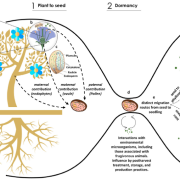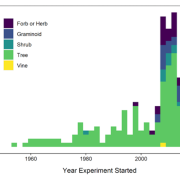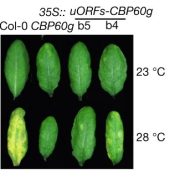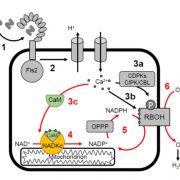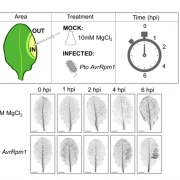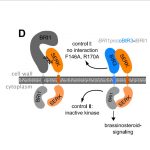Review: Extending Plant Defense Theory to Seeds (Annu. Rev. Ecol. Evol. Syst.) ($)
 Plants have developed multiple mechanisms to deal with the natural enemies they encounter through their life. In consequence, the Plant Defense Theory has arisen to assess how plants allocate resources to this purpose. However, much of the efforts in this matter has revolved around the defense that occurs in saplings and adult plants. In this exciting paper, Dalling et al. synthesize the different defense mechanisms employed by seeds. Since seeds encounter different natural enemies during different stages (i.e., pre-dispersal, post-dispersal, and soil seed banks), the authors discuss the relative importance of chemical and physical defenses in each of these steps. The coordination of defense traits with other seed traits is then discussed, showing that dispersal syndromes and dormancy classes constrain the investment in defenses: while physically dormant seeds would typically invest in physical defenses, the same investment would harm the dispersal capacity of wind-dispersed species. Still, the authors show that it is still unclear if there is a consistent trade-off between seed chemical and physical defenses, or how these defense traits are correlated with the strategies used to defend other organs or the persistence of seeds in the soil. As a result, this review paves the way for future research in the mechanism and evolution of seed defenses. (Summary by Carlos A. Ordóñez-Parra @caordonezparra) Annu. Rev. Ecol. Evol. Syst. 10.1146/annurev-ecolsys-012120-115156
Plants have developed multiple mechanisms to deal with the natural enemies they encounter through their life. In consequence, the Plant Defense Theory has arisen to assess how plants allocate resources to this purpose. However, much of the efforts in this matter has revolved around the defense that occurs in saplings and adult plants. In this exciting paper, Dalling et al. synthesize the different defense mechanisms employed by seeds. Since seeds encounter different natural enemies during different stages (i.e., pre-dispersal, post-dispersal, and soil seed banks), the authors discuss the relative importance of chemical and physical defenses in each of these steps. The coordination of defense traits with other seed traits is then discussed, showing that dispersal syndromes and dormancy classes constrain the investment in defenses: while physically dormant seeds would typically invest in physical defenses, the same investment would harm the dispersal capacity of wind-dispersed species. Still, the authors show that it is still unclear if there is a consistent trade-off between seed chemical and physical defenses, or how these defense traits are correlated with the strategies used to defend other organs or the persistence of seeds in the soil. As a result, this review paves the way for future research in the mechanism and evolution of seed defenses. (Summary by Carlos A. Ordóñez-Parra @caordonezparra) Annu. Rev. Ecol. Evol. Syst. 10.1146/annurev-ecolsys-012120-115156



